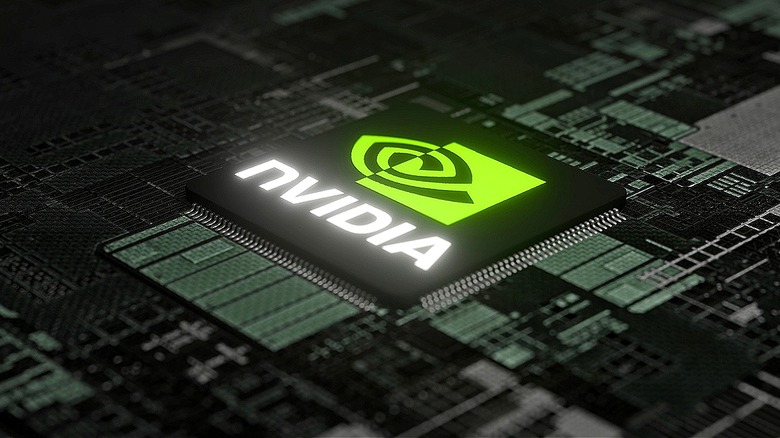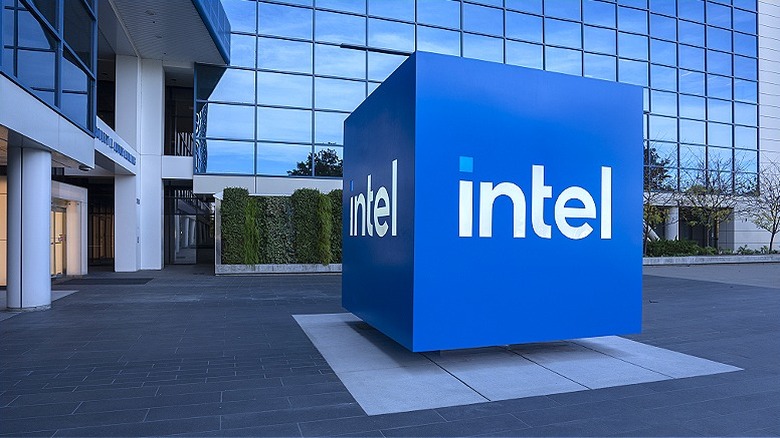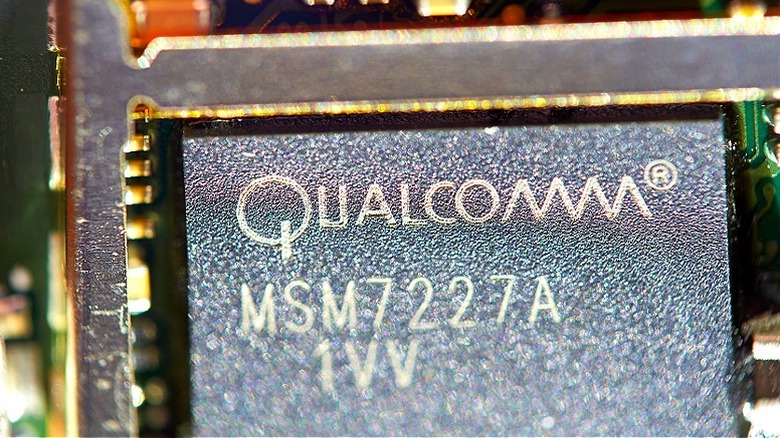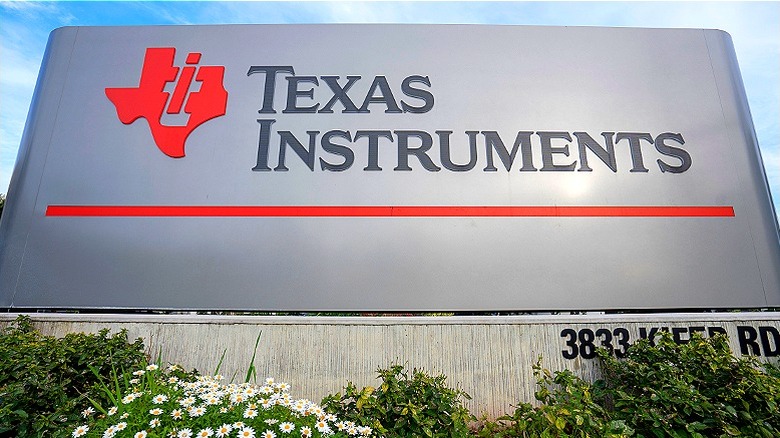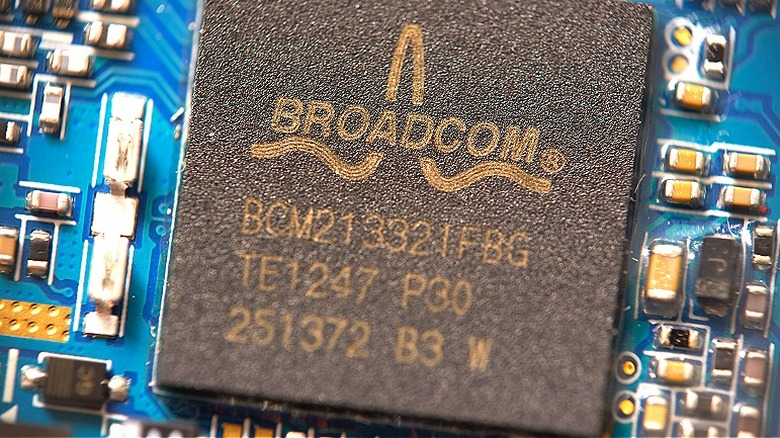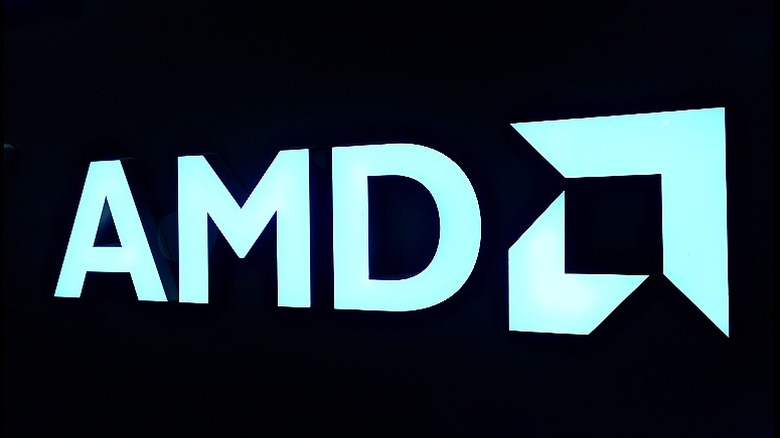Nvidia's Top Competitors In 2024 Are No Strangers To Wall Street
Nvidia (NASDAQ: NVDA) is the second largest company in the world, as of early October 2024. The top three companies — Apple, Nvidia, Microsoft — all have market caps over $3 trillion (they're the only ones) and have traded positions frequently over the last year, with Nvidia claiming the top spot at one point earlier in the summer. With such gigantic financial figures, it's easy for investors to consider buying into Nvidia. But there's also one gigantic "however" to be aware of here: Investing in companies that enjoy wild successes can become an investment driven by emotion and unsound logic. Note, we aren't advocating for or against a purchase of Nvidia stock, but rather, highlighting some additional information. (Full disclosure: I own some NVDA shares at the moment but have held larger and smaller positions, as well as sold out of ownership at numerous times in the past).
Buying a stock (any stock) because it is performing well today isn't always a great approach, as today's figures can become tomorrow's Achilles' heel. Moreover, NVDA is trading close to the top end of its 52-week range and sports a P/E ratio at 65.48 (as of October 24, 2024), well above the numbers that an investor will look for in a vacuum, but more on that later. Analysts classify NVDA as an overwhelming "buy," and for good reason, but it's also worth taking a beat to note the stock's 246.50% increase in value in the last year versus its substantial-yet-comparatively meager 24.47% performance in the last three months.
With this said, if you're looking to expand your exposure in this part of the tech space or you're seeking an NVDA stock alternative, these five companies — Intel, Qualcomm, Texas Instruments, Broadcom, and AMD — might be great candidates.
Intel (INTC)
Intel Corporation (NASDAQ: INTC) has been a pioneer in the processing game ever since the computer became a realized thing. An early developer of DRAM and SRAM memory, Intel crafted the first microprocessor in 1971. In the '90s, the company would partner with Microsoft to continue shaping the way personal computing evolved and grew, and it remains a massive player in the underlying marketplace that drives computing innovation.
As an investment, INTC is somewhat of a gamble today. While the company has consistently been a massive player in the industry and enjoys broad-name recognition, stock performance doesn't quite match the meteoric nature of the brand. Price-wise, INTC is trading near its 52-week low of $18.51 and has been on a gradual slide since December of last year. Sales growth for the company slowed to a halt in 2021 and hasn't recovered (retracting even more in each of the two full years since).
Revenue and net income have been on a steady decline since then, and the cost of goods sold and SG&A (selling, general, and administrative) expenses have seen an uptick in every year since 2019 (with a slight decline in 2023 bringing some reprieve to both figures). Analysts call INTC a "hold," but price targets suggest a potential 12-month ceiling of $42 with an average price target at $25.38. Low estimates come in at $18 (and just under its 52-week low). There's certainly upside there for investors willing to take on a bit of risk (especially with a P/E ratio nearing 100).
Qualcomm (QCOM)
Younger than Intel, Qualcomm (NASDAQ: QCOM) was established in 1985 and quickly hit the ground running. Qualcomm ("Quality Communications") has focused its innovative drive toward creating and redefining communications technologies. It was a driving force behind the creation of CDMA standards that underpinned the creation of a worldwide 3G network years later. The results have yielded a massively valuable brand ($44.2 billion in revenue in 2022 and $35.82 billion in 2023).
QCOM enjoys a weak "buy" rating from analysts and has seen somewhat stagnant price performance over the short term, even as one-year performance has seen it increase 59.34% in value. QCOM sits in the middle of its 52-week range ($104.33 – $230.63), trading at $168 in mid- October. Earnings-per-share figures of $7.71 keeps its financials in a sort of holding pattern long term with slight growth over the previous year.
In 2023, Qualcomm's figure reached its five-year high-water mark of nearly $10 billion. Its 21.82 P/E ratio is something of note, as well. Price-to-earnings ratio is a calculation that attempts to signal how valuable a stock is in relation to its price. In a tip you can steal from Warren Buffett, he once said, "price is what you pay, value is what you get," and P/E ratio is a rough guide to understanding this relationship. A P/E ratio between 20 and 25 is generally considered favorable (note, the lower the better), but figures from technology companies tend to come in notably higher. And so a tech firm with a P/E figure in this band is something of a specialty.
Texas Instruments (TXN)
The Texas Instruments (NASDAQ: TXN) logo is emblazoned on virtually every scientific and graphic calculator that high schoolers come into contact with. The brand delivers more than just calculators, though. It was founded in 1930 and creates tens of billions of chips on a yearly basis. A semiconductor juggernaut, Texas Instruments employs around 34,000 people globally and reported $17.52 billion in revenue against $5.1 billion in capital expenditures and $1.9 billion in R&D in 2023. Perhaps most importantly, the brand's market exposure isn't contained to one, or even two segments. Key market presence for Texas Instruments can be seen in industrials, the automotive marketplace, communications, and personal equipment (like its rampant calculator stranglehold).
While TXN isn't a dividend aristocrat yet, the dividend figure has increased 18 years in a row, placing it within striking distance of this exclusive club (25 years of consistent increases constitutes a dividend aristocrat). Currently, the payout rate stands at 2.71%, a healthy dividend number for a tech firm. Texas Instruments is a specialist in 300-mm wafer chips. In contrast to its competitors' typical 200-mm offerings, Texas Instruments claims a 40% cost advantage, giving it a significant edge in the marketplace.
There must be something to these claims because the company's capital expenditures figure has remained fairly static throughout much of the last 30 years with tremendous upward momentum in free cash-flow figures occurring at the same time. Analysts call TXN a "hold," with one- and three- month prices both seeing slight withdrawals. Even so, the stock is trading near the 52-week-high figure, features an EPS of $5.38, and sports a P/E ratio of 38.14, which is a little inflated for the average but not overextended. (Check out 12 of the best compound interest investments.)
Broadcom (AVGO)
Broadcom (NASDAQ: AVGO) is another semiconductor player that competes both directly and indirectly with Nvidia. The Motley Fool once called Broadcom "one of the best run semiconductor companies," elevating its value to shareholders and enterprise consumers through varied product offerings and a decent dividend yield for the market (1.24%). You may recognize Broadcom's name from the infrequent but routine driver updates that take place within your computer. The company delivers software and hardware products to both consumers and enterprise clients, with its "wired infrastructure" accounting for 42% of its revenue in 2018: $20.86 billion then, and $35.8 billion in 2023, driven by "investments in accelerators and network connectivity for AI by hyperscalers," according to Broadcom's fourth-quarter reporting.
AVGO is a unique one. The company's P/E ratio is 148.68, a figure that should alarm investors focusing on that particular data point. This suggests a huge overinflation of the stock's price in relation to the company's actual value. However, analysts call Broadcom a strong "buy" and the company is trading near its 52-week high of $186.42 (at around $170 as of October 24). Five-day performance is negative, but every other metric up to a year is positive for the stock, including 5.61% growth over the last month and up to a 103.75% increase over the yearlong period.
Investors love seeing a steady climb, and AVGO showcases small corrective pressure but no major turnarounds in price and only a single true spike. This signals a potentially sound value growth that isn't reliant on a new product launch or hype that can quickly evaporate. Revenue for the company has grown steadily over the last five years, with cost of goods sold remaining relatively static (and retreating in 2021 and 2023).
AMD (AMD)
Founded in 1969, AMD (Advanced Micro Devices) (NASDAQ: AMD) was first positioned as a memory chip researcher and builder. Microprocessing came next for the company, with a move into this territory taking place in 1975 and placing it in direct competition with Intel — something that would remain a feature of AMD's existence long into the future and continuing today. Interestingly enough, AMD's founder, Jerry Sanders, worked at Fairchild Semiconductor, the company that Intel's founders had previously worked at before launching their own endeavor less than a year earlier.
Today, AMD is a massive name in all things computing, including graphics processing, which places it directly alongside Nvidia in the marketplace. AMD doesn't produce as much revenue as Nvidia does, but it is still a major player, generating $22.68 billion in 2023. Moreover, AMD chips and graphics processing gear are found in many high-end computing devices both in the consumer market and elsewhere.
Analysts also call AMD a strong "buy," even as its P/E ratio stands sky high at 184.04. AMD is priced just under the midway point in its 52-week range ($152.35 – $155.19), leaving plenty of room for appreciation without setting new pricing windows and flipping over into unexplored territory. The company's 12-month price target sits at $188.77. Revenue is trending up, with huge increases every year but in 2023 (showing a slight decline of 3.9% versus 40-plus percentage point growth figures beforehand and 68% in 2021). A gradually increasing curve in outlays for R&D matched with over $1 billion in free cash flow in 2023 (though down from over $3 billion in the two prior years) showcase a company that's stable and chasing new growth. (Review tips for investing in stocks as a beginner.)
